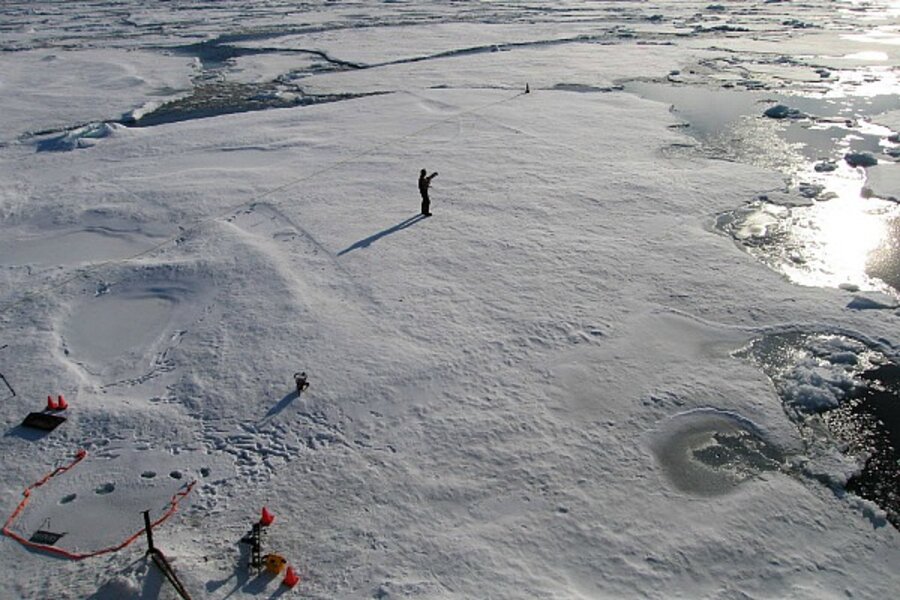Extent of Arctic summer sea ice at record low level
Loading...
While tropical cyclones, as well as record droughts, floods, and wildfires have kept several of the lower 48 states occupied this year, the Arctic appears to be elbowing its way on to 2011's list of extremes.
On Thursday, the extent of summer sea ice in the Arctic Ocean fell to its lowest level for any Sept. 8 since satellites first began to monitor conditions there in 1979, according to researchers at the University of Bremen's Institute of Environmental Physics.
Coming so close to the end of the melt season, the observation holds out the prospect that 2011 could replace 2007 as the toughest year for sea-ice survival at the top of the world.
The dip comes on the heels of a record low for the month of July, and August levels that flirted with the 2007 record but did not quite cross the line, according to the National Snow and Ice Data Center in Boulder, Colo.
The data testify to a long-term decline in summer ice underway since at least 1979. Several factors have contributed to the decline.
Recent work by researchers at the National Center for Atmospheric Research (NCAR) in Boulder suggests that roughly half the decline can be attributed to the effects of global warming. The other half they lay at the doorstep of natural swings in regional wind patterns that can drive ice out of the Arctic and into the North Atlantic.
In addition, several researchers see a contribution coming from black-carbon soot. Winds bring the soot up from lower latitudes and deposit it on the ice, where it absorbs sunlight and re-radiates it as heat.
The minimum extent of sea ice still varies from one year to another, influenced by natural variations in regional wind patterns. Indeed, the NCAR study, published in the journal Nature in early August, suggests that even within a long term warming trend, the loss of sea ice in the summer could stall, or even reverse itself for periods of up to a decade – at least through mid-century.
However, if the general long-term climate-warming trend continues, as many researchers expect given the rising levels of greenhouse gases that human activities continue to pump into the atmosphere, "there's no escaping the loss of ice in the summer" over the next 50 or 60 years, says Jennifer Kay, who led the team conducting the study.
Meanwhile, researchers at the University of Washington's Polar Science Center note that in 2010 the volume of summer sea ice fell to a record low. Volume takes into account ice thickness, as well as extent.
The team's study, which has been accepted for publication in the Journal of Geophysical Research-Oceans, points out that ice volume is a more sensitive indicator of climate change than sea-ice extent because it is most sensitive to ocean temperatures. In the Arctic, those temperatures are affected not only by the amount of open water ice extent presents, but by the temperature of water flowing into the Arctic Ocean from lower latitudes.





